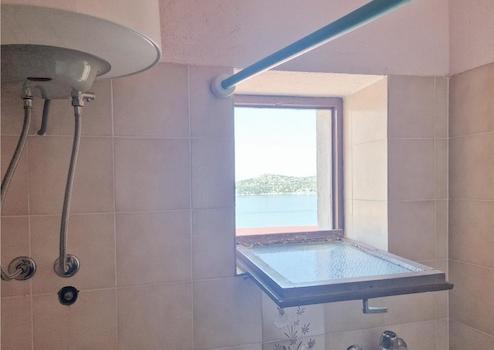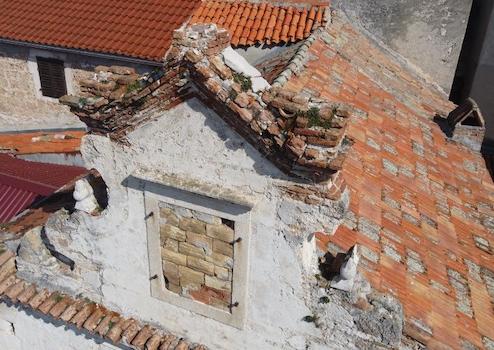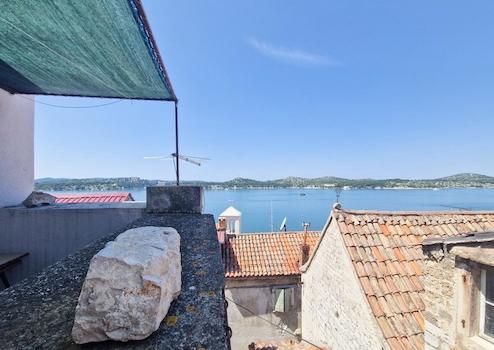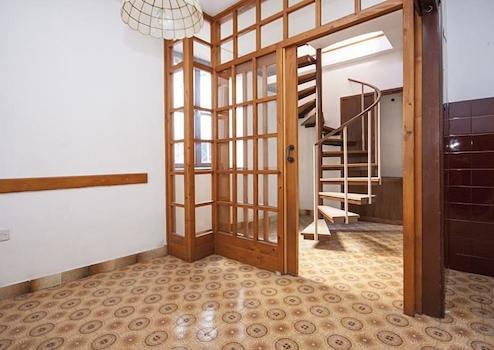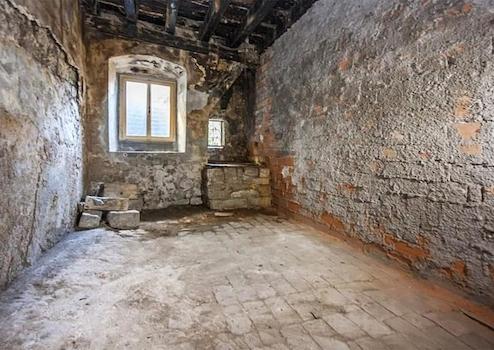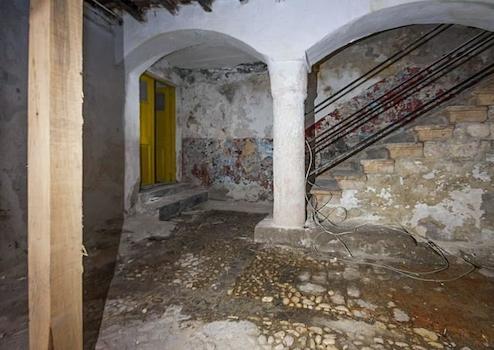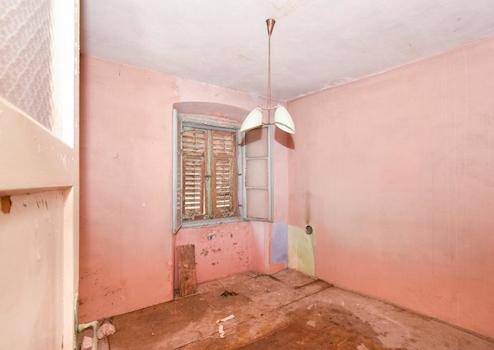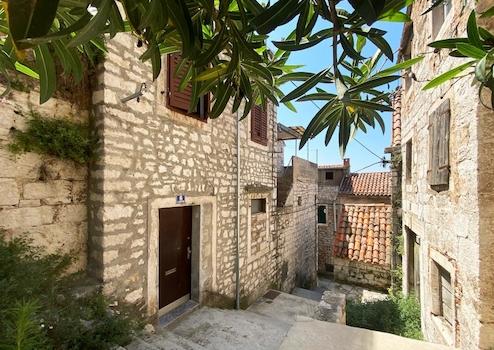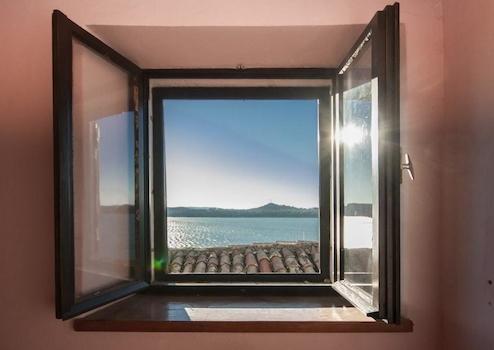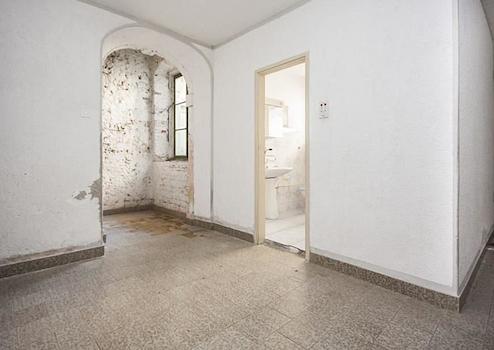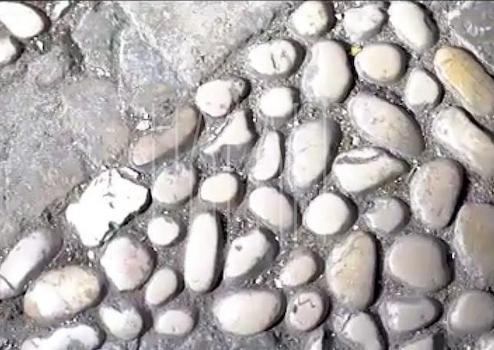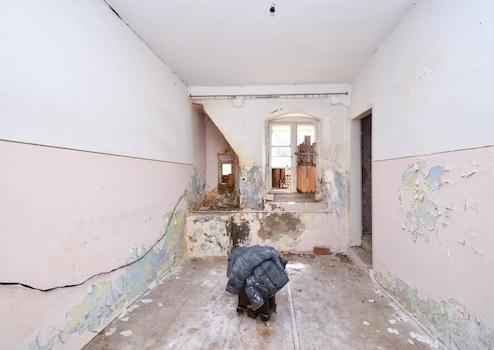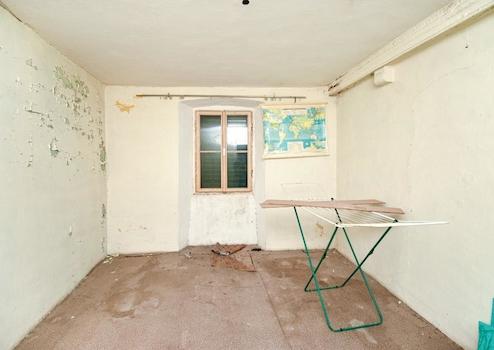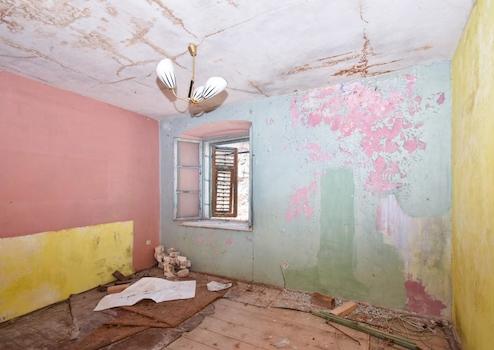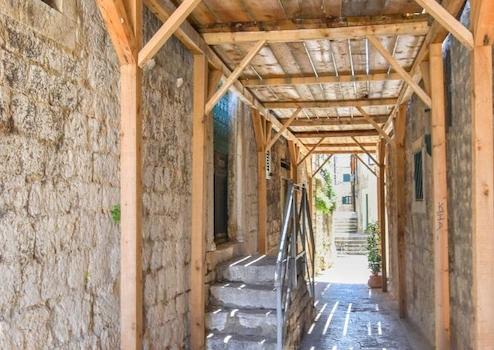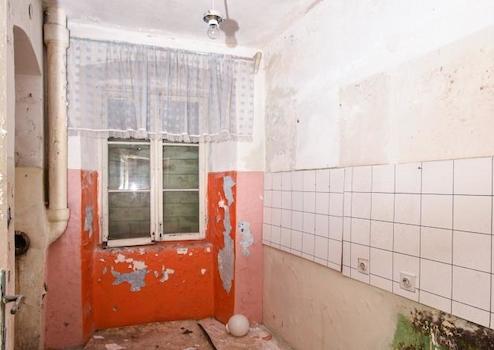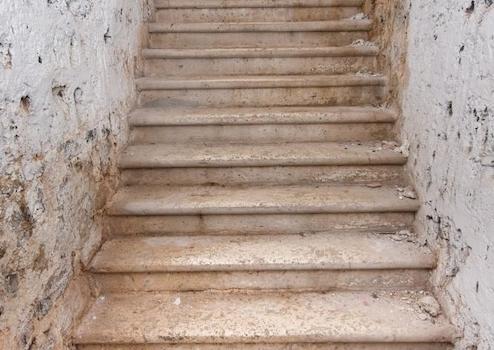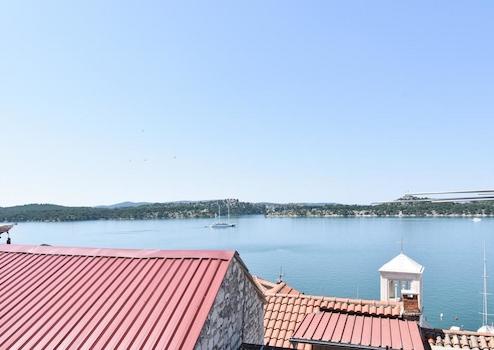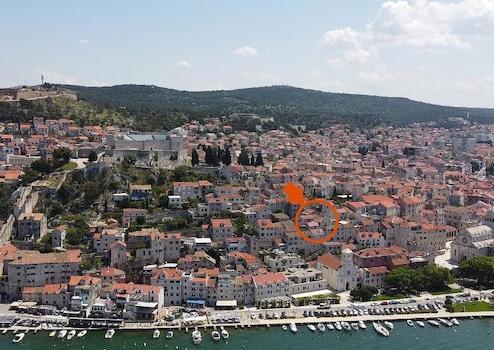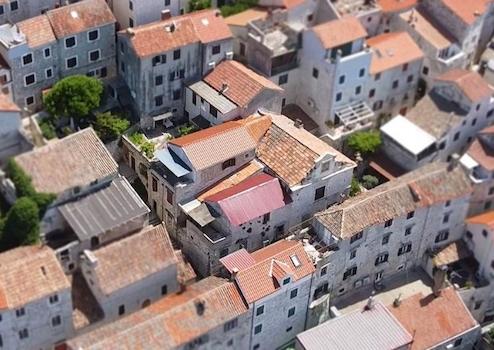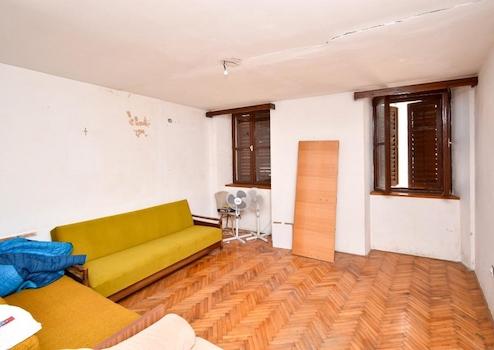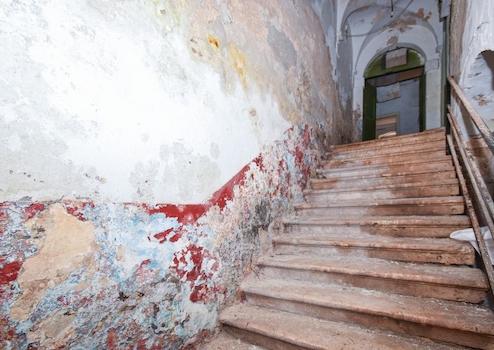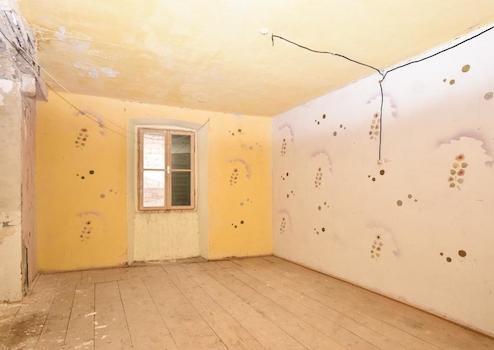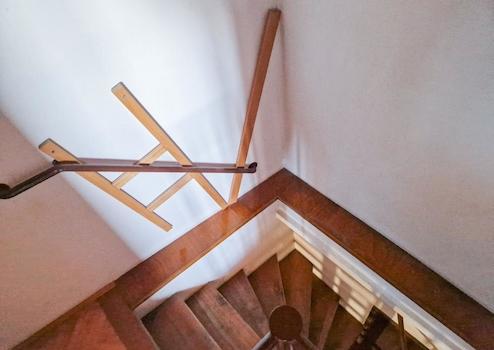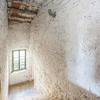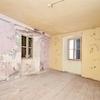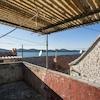REDUCED PRICE !!! Palace of the Old Pretura in Šibenik, 539 m2
590.000 €
Kaufpreis
immobilien.de Nr.: 8423924
Objektnummer: 659
Preise & Kosten
| Kaufpreis | 590.000 € |
| Nebenkosten | keine Angabe |
Größe & Zustand
| Verfügbar ab | keine Angabe |
Objektbeschreibung
Šibenik is the oldest Croatian native city (it is the only major coastal city founded not by Romans but by Croats, so it is of particular importance for Croatian history), and the Gorica area, where the house we call the Palace of Old Pretura was built, next to Dolac is the oldest part of Šibenik.First mentioned in 1066, in the gift of King Petar Krešimir IV, Šibenik was built at the foot of a fortress on a high cliff, without the ancient urban tradition, spreading towards the sea. According to historians, Šibenik has emerged as a city of winding streets and small squares, steep staircases and arched passages, irregular and regular apartment blocks, a city of strong dramaturgy of plans.Šibenik is the city with the most stone steps on the Adriatic, and according to some estimates, as many as 2851, and almost all belong to Gorica, part of the city that many of its inhabitants, more precisely, the most steadfast or perhaps the most sentimental, consider the most beautiful place to live. replaced old family houses with plots or apartments in newer Šibenik neighborhoods.Gorica began to settle en masse after the plague epidemic of 1398 and the Ottoman invasion. Upstairs farmhouses were built, built and covered with tiles, with a tavern on the ground floor.In Gorica, many streets are dedicated to the greats of art - from Horace Fortezza Street, without a doubt the most important goldsmith and engraver of the Croatian Renaissance, Nikola Vladanov, whose Polyptych of St. Gregory can include in the masterpieces of the 15th century, Juraj Petrovic, a priest who signed one of the most tragic Croatian crucifixes in the chapel of St. Cross of the Šibenik Cathedral to Andrija Kačić Miošić, author of the cult book "Pleasant Conversation of the Slovenian People" who lived in Šibenik for ten years in the monastery of St. Lawrence. In Gorica there is the famous Benedictine monastery of Our Lady of the Rosary and the oldest church in Šibenik, St. Krševan from 1200.
The construction of the house we know today as the Palace of the Old Pretura can be traced back to the early 15th century. It is located in Jurja Dalmatinca Street, one of the narrowest, longest and oldest streets in the city, which was called Camerino in the Middle Ages and was the central communication of medieval Šibenik connecting the central part of the city with the northwestern coast. Today it bears the name of the builder of the Cathedral of St. Jacob, because his house was in that street. Today, Camerino Street is considered to have been the main street in Šibenik at that time, half a century ago, when the city was ruled by the Venetians. Centuries later, in the period between the two world wars, Juraj Dalmatinac Street was known as "suspicious kala", in which, according to historical books, there was "entertainment of all kinds, including fornication". Entrance to the brothel was charged 2 dinars, and the entire service 30 dinars.The Palace of the Old Pretura, in Juraj Dalmatinac Street, is a complex of houses consisting of eastern and western buildings. The buildings have a ground floor and two floors, with the western building being slightly lower. They are built of quality stone. All window openings on the main south facade of the houses are built with profiled skylights. At the top of the facade of the eastern building is a unique painted luminaire (crown of the house) framed by baroque spiral ornaments, the so-called. volutes, in a triangular gable. Below the roof, on the second floor, you can see a large rebuilt early Renaissance window with a motif of alternating teeth. The ground floor of Stara Pretura, which is a rarity in the interiors of old Šibenik houses, is paved with a combination of pebbles and bricks, which was a common combination for paving old city streets.
During the Renaissance, the house was modified and expanded for the purpose of the so-called. Preture. The searches were partly in charge of administrative affairs and partly of civil litigation. The main judicial authority of the praetor in civil litigation was to give a legal opinion and to prohibit the performance of an act. The municipal government in Šibenik was formed at the beginning of 1807 during the French civil and military administration. The city was the center of political pretura and county government. In the political-administrative system of Austria-Hungary, it was subordinated to Zadar as the main center of Dalmatia until 1918.The Palace of the Old Pretura in Šibenik's Gorica was, therefore, the center of judicial power in Šibenik during the 19th century. The city was then experiencing its "golden age", a term referring to three decades of economic, intellectual and cultural prosperity. Advanced ideas, avant-garde in thought and deeds, and visionary management of the city, marked the years in which Šibenik lived ahead of its time. At that time, Šibenik got an energy system, with transmission lines and transformer stations, and many public projects got electricity, such as a hospital, theater and pasta factory, and a public lighting system was designed.Today, Juraj Dalmatinac Street, which is dominated by the Palace of the Old Pretura, is extremely attractive for tourists, where, in addition to Pretura, you can see the house of the builder of the Cathedral of Juraj Dalmatinac, as well as the church of St. Gregory. The street of stone houses exudes the history and secrets of medieval Šibenik, some of which are still waiting to be discovered.
The construction of the house we know today as the Palace of the Old Pretura can be traced back to the early 15th century. It is located in Jurja Dalmatinca Street, one of the narrowest, longest and oldest streets in the city, which was called Camerino in the Middle Ages and was the central communication of medieval Šibenik connecting the central part of the city with the northwestern coast. Today it bears the name of the builder of the Cathedral of St. Jacob, because his house was in that street. Today, Camerino Street is considered to have been the main street in Šibenik at that time, half a century ago, when the city was ruled by the Venetians. Centuries later, in the period between the two world wars, Juraj Dalmatinac Street was known as "suspicious kala", in which, according to historical books, there was "entertainment of all kinds, including fornication". Entrance to the brothel was charged 2 dinars, and the entire service 30 dinars.The Palace of the Old Pretura, in Juraj Dalmatinac Street, is a complex of houses consisting of eastern and western buildings. The buildings have a ground floor and two floors, with the western building being slightly lower. They are built of quality stone. All window openings on the main south facade of the houses are built with profiled skylights. At the top of the facade of the eastern building is a unique painted luminaire (crown of the house) framed by baroque spiral ornaments, the so-called. volutes, in a triangular gable. Below the roof, on the second floor, you can see a large rebuilt early Renaissance window with a motif of alternating teeth. The ground floor of Stara Pretura, which is a rarity in the interiors of old Šibenik houses, is paved with a combination of pebbles and bricks, which was a common combination for paving old city streets.
During the Renaissance, the house was modified and expanded for the purpose of the so-called. Preture. The searches were partly in charge of administrative affairs and partly of civil litigation. The main judicial authority of the praetor in civil litigation was to give a legal opinion and to prohibit the performance of an act. The municipal government in Šibenik was formed at the beginning of 1807 during the French civil and military administration. The city was the center of political pretura and county government. In the political-administrative system of Austria-Hungary, it was subordinated to Zadar as the main center of Dalmatia until 1918.The Palace of the Old Pretura in Šibenik's Gorica was, therefore, the center of judicial power in Šibenik during the 19th century. The city was then experiencing its "golden age", a term referring to three decades of economic, intellectual and cultural prosperity. Advanced ideas, avant-garde in thought and deeds, and visionary management of the city, marked the years in which Šibenik lived ahead of its time. At that time, Šibenik got an energy system, with transmission lines and transformer stations, and many public projects got electricity, such as a hospital, theater and pasta factory, and a public lighting system was designed.Today, Juraj Dalmatinac Street, which is dominated by the Palace of the Old Pretura, is extremely attractive for tourists, where, in addition to Pretura, you can see the house of the builder of the Cathedral of Juraj Dalmatinac, as well as the church of St. Gregory. The street of stone houses exudes the history and secrets of medieval Šibenik, some of which are still waiting to be discovered.
Kontakt
| Telefon | +385 91 111 8089 |
| Website | www.palace.agency |


